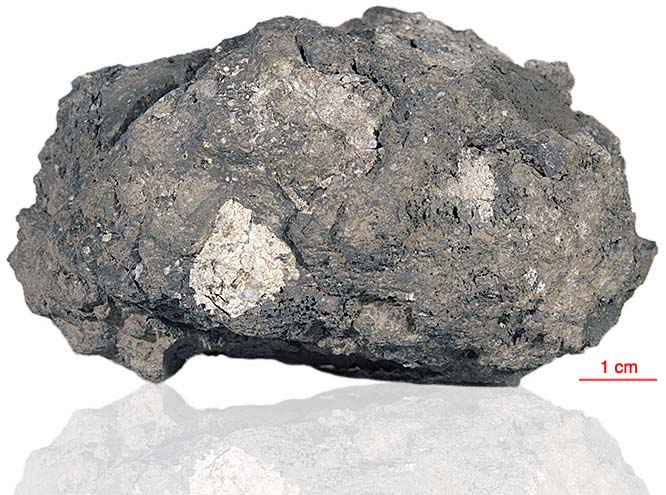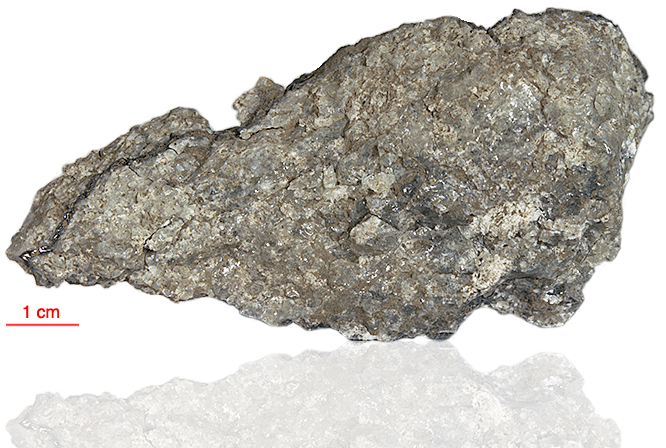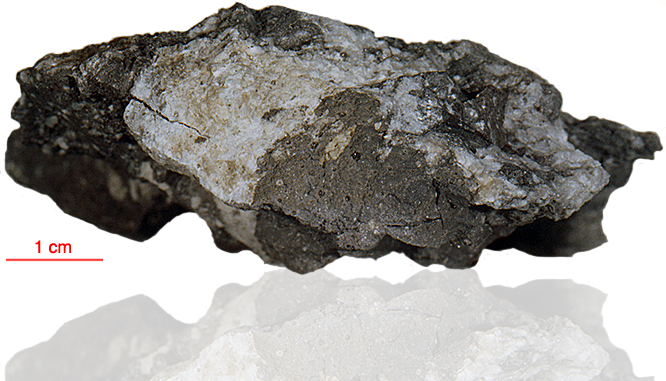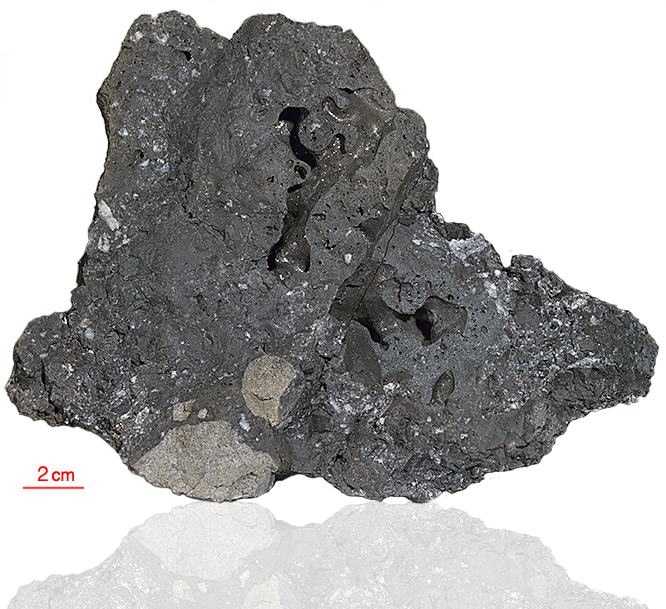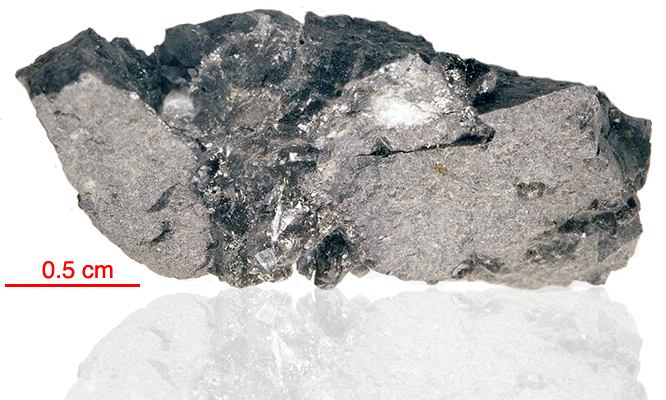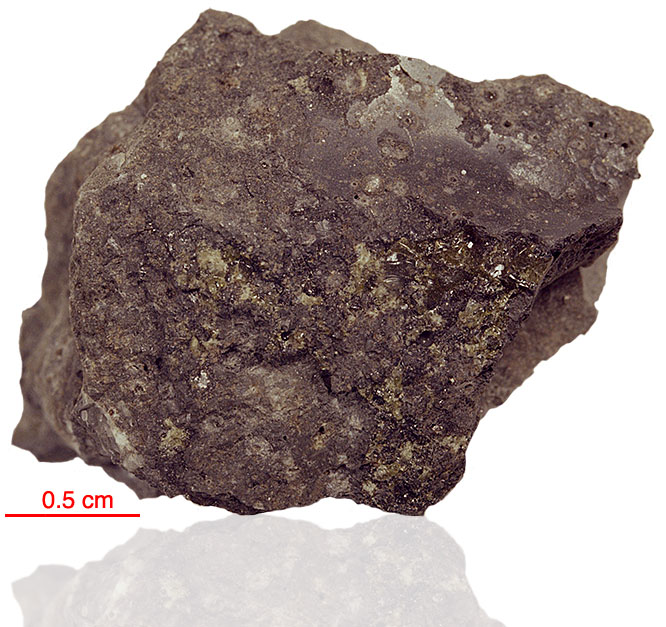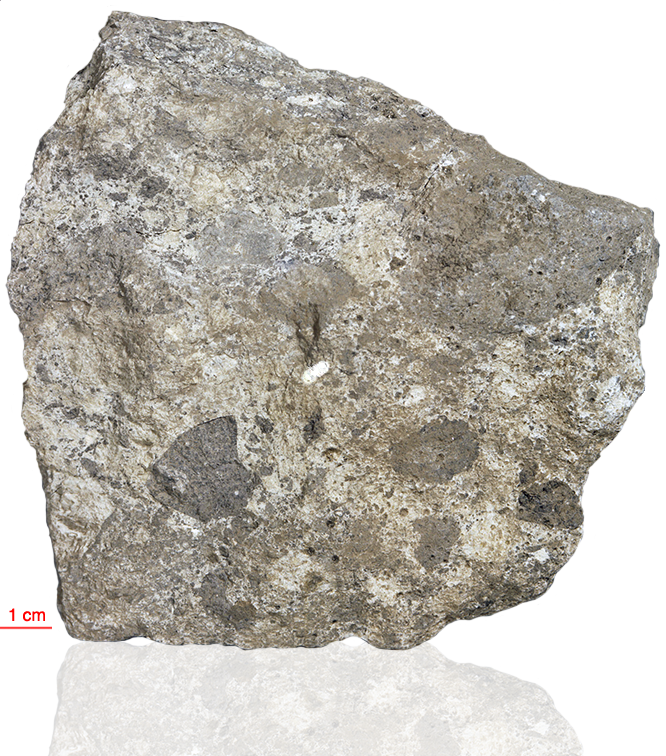
Fact sheet
66055 is somewhat different from most other Apollo 16 samples. It appears to be intermediate between fragmental breccias and glassy melt breccias, with included abundant rounded patches of brown glass. It contains abundant KREEP glass and even some areas of granitic glass. The dark materials vary from brown glass to mesostasis-rich basalt (see rotation 1), with some fragments showing graduation from one to the other. The white fragments mainly have poikiloblastic or granoblastic textures whereas others are apparently shocked cumulate materials. Kamacite, taenite and schreibersite have been reported.
The sample weighed 1308 grams before analysis and is estimated to be 3.9 billion years old.
Further details of this and other Apollo samples are here: http://curator.jsc.nasa.gov/lunar/
The Apollo 16 landing site was in the hilly region around Descartes crater in the lunar highlands. The landing spot was chosen to allow the astronauts to gather geologically older lunar material (Descartes Formation and the Cayley Formation) than the samples obtained in the first four landings, which were in or near lunar maria.
The mission lasted 11.1 days, with a stay on the lunar surface of 71 hours. The crew were on the lunar surface for 20.2 hours during which they traversed approximately 27 kilometers and collected approximately 96 kilograms of samples.
Apollo 16 was launched on 16 April 1972.

